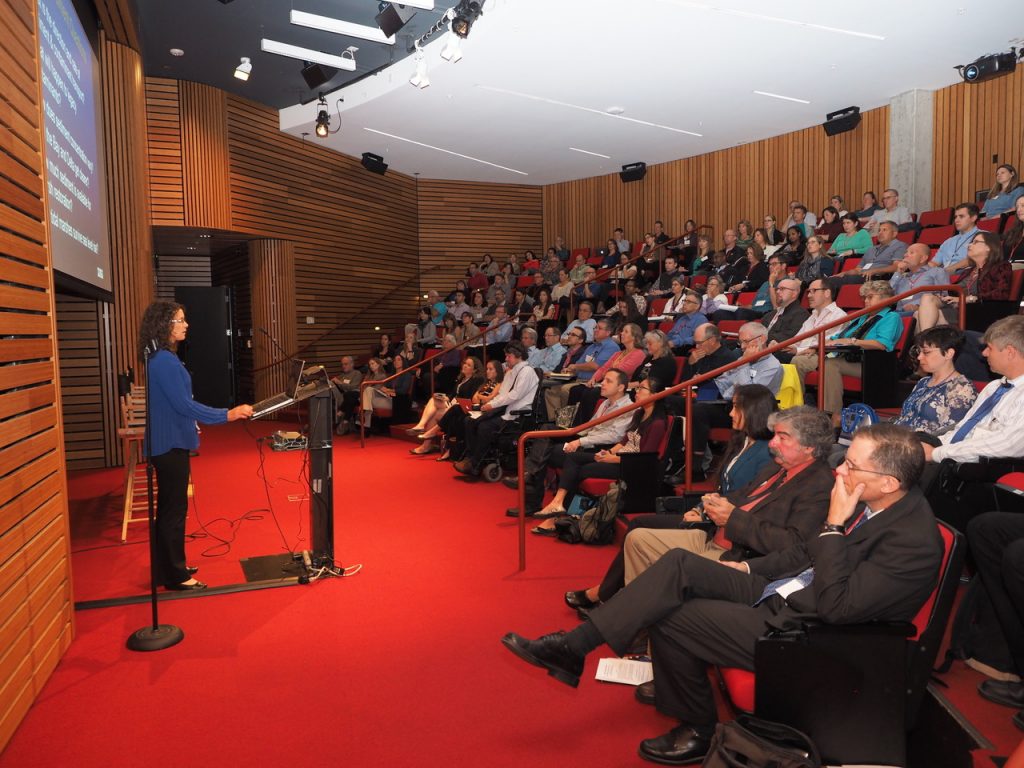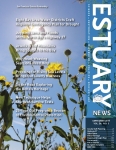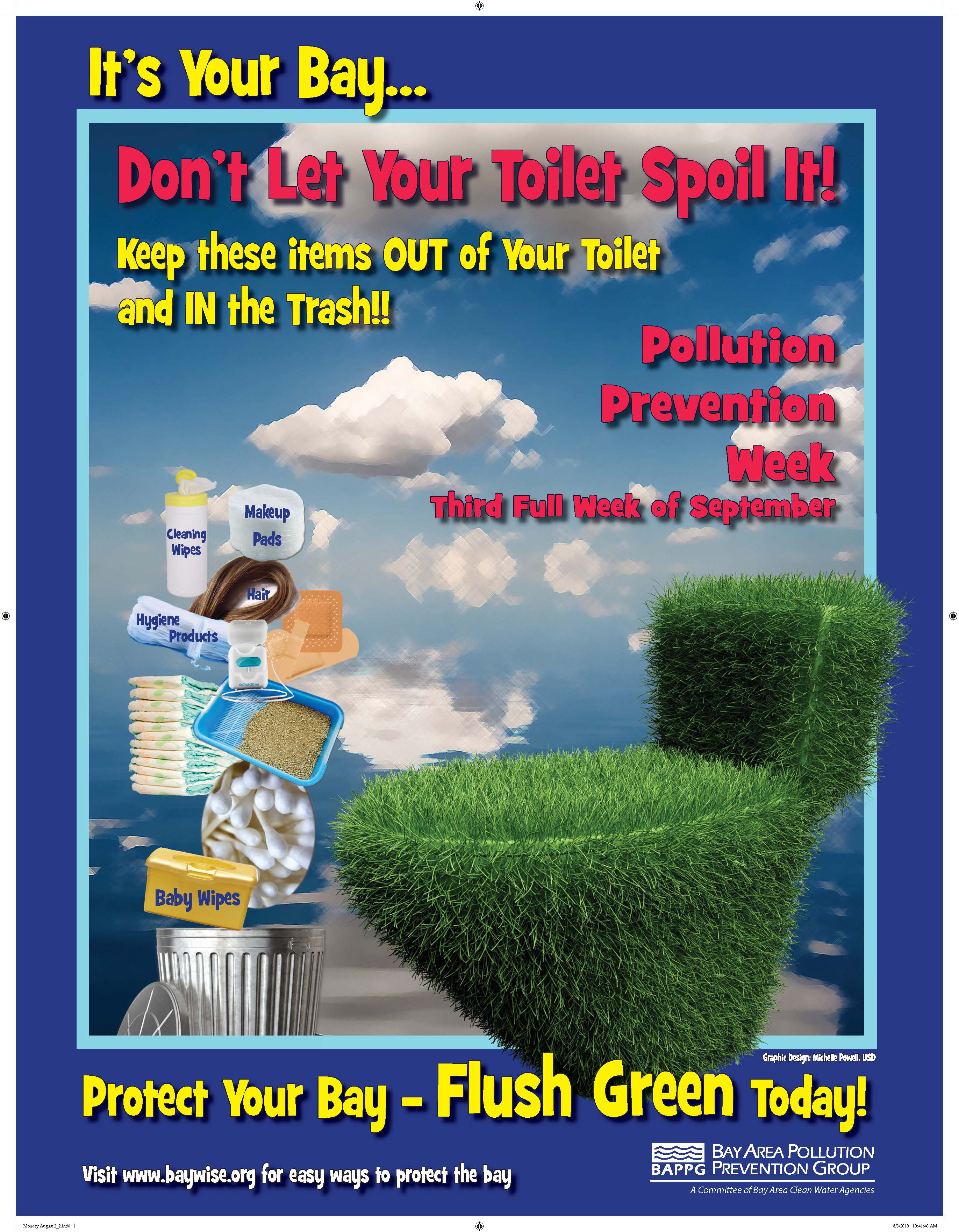What some might call a regulatory burden on industry, commerce, and American greatness, others might call the road to success. Jay Davis, a serious guy, doesn’t crack a smile when he describes the Bay Area’s Regional Monitoring Program as “a beacon of environmental protection.” It may sound a little over the top, for a PhD who ran the program for more than a decade, but all you have to do is fact check. Ask some of the oil refineries, power plants, cities, engineers, ports, scientists, and regulators who’ve participated in this 25-year old collaborative monitoring program to confirm this result and they all say the same thing. It takes time but saves money. It helps those being regulated deal with water quality challenges — whether it’s a spill, toxic algae blooms, or a new perfume or pesticide — and helps regulators drive water quality improvements. “Whatever the pollutant de jour, the RMP helps us adapt,” says Karin North of the City of Palo Alto, Vice Chair of RMP Steering Committee. “We’re not missing a thing working together; instead we’re getting a lot of our management questions answered.”

What some might call a regulatory burden on industry, commerce, and American greatness, others might call the road to success.
Jay Davis, a serious guy, doesn’t crack a smile when he describes the Bay Area’s Regional Monitoring Program as “a beacon of environmental protection.” It may sound a little over the top, for a PhD who ran the program for more than a decade, but all you have to do is fact check. Ask some of the oil refineries, power plants, cities, engineers, ports, scientists, and regulators who’ve participated in this 25-year old collaborative monitoring program to confirm this result and they all say the same thing. It takes time but saves money. It helps those being regulated deal with water quality challenges — whether it’s a spill, toxic algae blooms, or a new perfume or pesticide — and helps regulators drive water quality improvements.
“Whatever the pollutant de jour, the RMP helps us adapt,” says Karin North of the City of Palo Alto, Vice Chair of RMP Steering Committee. “We’re not missing a thing working together; instead we’re getting a lot of our management questions answered.”
“The data from the RMP are available to everyone and are developed by a very good scientific staff with no agenda,” says Peter Carroll of the Tesoro-Martinez oil refinery, who sits on the RMP Steering Committee “Since the RMP has been in existence, we’ve had great dialogue and reached a sound consensus on most decisions. It’s a good constructive group to work with.”

When the RMP started up 25 years ago, it focused on monitoring contaminants in water, sediment, clams, and fish in the open Bay. These measurements helped regulators make important water quality decisions, with selenium along with PCBs, DDT, and heavy metals on their front burner early on. Selenium sources included upstream inputs from the Delta farm fields and North Bay inputs from oil refinery discharges then cycled through the food web by hyper-active invasive clams.
In the 1990s, the regional regulatory boards asked the farmers and the refineries to reduce their selenium inputs. “With added treatment, the load from refineries dropped over 70% in just a few years, it’s a good story,” says Peter Carroll. As the oil refinery’s technical lead on selenium for eight years, Carroll recalls working with various entities to do and redo technical studies that are now more easily handled through the RMP. “We recently developed a way to integrate and synthesize existing RMP data and North Bay selenium studies that’s going to be very helpful in the long term,” he says.
In the 2000s, the RMP branched out from traditional contaminants, moving up into watersheds to look for sources, and tackling emerging problems like pesticides in urban runoff. In the last five years, the RMP has moved into the margins of the Bay, expanded its work on emerging contaminants beyond single compounds to whole classes of chemicals, and installed an array of moored sensors that allow it to monitor nutrients every 15 minutes, rather than every 30 days as it had before.
“We all pay into the program, and we want the program to be addressing the most relevant issues. If those aren’t our individual issues we’re okay with that,” says Bridgette DeShields of Integral Consulting Inc., Chair of the RMP Technical Review Committee. “We want science to be informing priorities.”
In the last five years, one priority has been getting a better handle on growing inputs of nutrients, which affect oxygen and algae levels in the Bay and local reservoirs. Levels of nutrients in our water – which come from fertilizers, sewage, and runoff – can change on an hourly basis due to tides, turbidity, and photosynthesis. “There’s no way to understand something like this unless you’re monitoring at a frequency that is higher than changes are happening,” says the RMP’s manager Phil Trowbridge.

To address this need, the RMP deployed eight new sensors around the South Bay. They’re generating gigabytes of data in need of storage, analysis, and quality assurance, but the RMP is stepping up to the task. The Program recently created some powerful new computer models of how nutrients behave in the Estuary, models it can now also use to make predictions about the mass balance of other kinds of contaminants.
Another priority has been monitoring what’s coming out of the mouths of small tributaries, and here timing is important as well. When it began pouring rain last January, marking the end of California’s extended drought, scientists rushed to the RMP begging for a chance to get out in the storm and sample the effects. More water, sediment, and buried contaminants were pouring off the hillsides, into the Bay, and out the Golden Gate in a few weeks than had in the last five years.
“When we had that high flow event, we were able to approve funding for teams to go out and get measurements in the field by email,” says Karin North. “Municipal agencies can’t be that nimble. But because we pool our resources, put proposals through the RMP review committees, and have a cohesive governing board, we can be quick to respond. It’s a great system.”
A third priority has been to keep up with the hundreds of new chemicals and products, with their potentially harmful ingredients, introduced on the market every year. To stay current, and prevent replacement products that can be even more harmful than those banned, the RMP’s Contaminants of Emerging Concern (CECs) program now looks at classes of chemicals rather than one at a time.
Which brings us to another good story from the RMP archives. Within a few years of receiving the scientific evidence that flame retardants were turning up in both harbor seals and Bay Area women, the state had banned PBDEs, and reduced the flammability standard from open flame to smoldering cigarette. “It makes a big difference to our wastewater water quality if a product is 30% active ingredient or much less,” says North. The CEC program is now tracking spot-on flea controls, microplastic, pharmaceuticals, and personal care products passing right through treatment plants into the Bay. “We rely on the RMP scientists to give us the data we need to do public education about pollution prevention, rather than having to get the data ourselves.”
In the last five years, the RMP has also greatly expanded its monitoring of what’s happening in the Bay margins. Here contaminants coming downstream attached to eroded sediment particles end up in mudflats and creek mouths where small fish hang out. “What’s happening in the margins is very different from our old bathtub model of the Bay where all fish are exposed to all contaminants in the same way,” says Trowbridge. “Our new understanding is that certain fish get a lot of their exposure to contaminants in the margins.” In 2015, eager to tease out these differences, the RMP developed a study to measure the baseline contamination in the margins to define “how clean is clean.” Past monitoring in the margins was more focused on hot spots near pollution sources.
“These last years we’ve had big goals for big programs so we needed bigger money,” says Bridgette DeShields. “It’s expensive to monitor chemicals from so many potential sources, to cover so many tributaries and watersheds around the Bay, to work in the margins with small boats at high tide, while also maintaining important smaller programs around micro-plastics and selenium.”

To cover some of these kinds of expansions, the Steering Committee reallocated some money from old priorities to new ones. “We asked the Regional Board if we could drop a bunch programs yielding ‘non-detects’ and redirect funding to CECs and they agreed,” says Karin North.
Another windfall also helped make up the difference. In 2016, the RMP became an approved program for use of penalty fees from discharge violations. “We thought we’d get $50K but we got $400K in 2016,” says Trowbridge. “It’s helping us to make progress on multiple fronts, and to accelerate the pace of monitoring and research.”
Twenty-five years in, industries and dischargers who might once have quibbled over where to spend research dollars, or resisted regulatory oversight concerning what kind of data are necessary to collect, are quite content with decision-making through the RMP. “There are not many places in the world with a culture of collaboration that equals San Francisco Bay,” says Phil Trowbridge.
Collaborative programs in all kinds of public environmental sectors were earmarked by the Trump administration early on as good candidates for budget cuts. This short-sightedness, along with equally short-sighted cuts to long-term EPA and USGS monitoring programs, promise to challenge the RMP, which hitchhikes on lots of federal vessels and equipment.
This year the RMP also recently lost one of its earliest investors: power plants. Protections for fish from the hot water they discharge caused the phase out of once-through-cooling of all the power plants in the state. The last one in the Estuary, Pittsburg Power Plant, shut down in 2017.
“For the first time in 25 years, we had to adjust RMP distributions in all sectors because one sector left the program,” says Trowbridge. “That we survived shows the stability of the partnership.”
RMP
2017 Pulse Celebrating RMP 25th
Read the rest of the issue
Receive ESTUARY News for free









 The results are alarming for our state’s future: an estimated four to five feet of sea level rise and loss of one to two-thirds of Southern California beaches by 2100, a 50 percent increase in wildfires over 25,000 acres, stronger and longer heat waves, and infrastructure like airports, wastewater treatment plants, rail and roadways increasingly likely to suffer flooding.
The results are alarming for our state’s future: an estimated four to five feet of sea level rise and loss of one to two-thirds of Southern California beaches by 2100, a 50 percent increase in wildfires over 25,000 acres, stronger and longer heat waves, and infrastructure like airports, wastewater treatment plants, rail and roadways increasingly likely to suffer flooding.